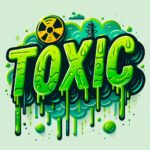There I was, a fresh-faced newbie writer staring at a blank Google doc. I had just scored my first gig writing commentaries for CNA and was pumped.
This was my big chance to share my ideas and be read by thousands!
Fingers hovering over the keys, I took a deep breath, envisioned pumping out brilliant prose, and froze up entirely.
Where should I even start?
How do I grab attention instantly?
What structure or style should I use?
The anxiety of the empty white screen paralysed me.
Who was I to think I could pull this off anyway?
After 2 hours, I hacked out a rough draft to have anything down.
I cranked out what I felt was a super insightful commentary dissecting current workplace issues.
Polishing it off, I proudly sent my piece to the editor, certain I was about to impress.
Well, impressed, I did not.
What I got back made me crawl under my desk in shame.
It was covered in so much red-ink feedback that you could barely see my original text.
“Unfocused”, “Poor structure”, and “No central narrative” were just some of the comments.
To say it was humbling would be an understatement.
But that baptism by fire taught me more about writing commentaries than any class could.
It began my journey of learning this unique style through trial and error.
Now, 20+ published pieces later, I can look back on those lessons to help any aspiring commentator staring down that scary blank page:
1. Hook ’em Hard
Your opener is make or break.
With infinite content just a click away, you have seconds to grab readers before they bounce.
For my popular commentary, “LinkedIn’s toxic positivity and hustle culture create unrealistic work expectations,” I led with a humorous story of trying to work remotely from the beach…and epically failing.
This universal experience of reality not matching expectations instantly engages.
Find your own relatable anecdote to reel people in.
2. State Your Case
After the hook, clearly spell out your central argument or thesis.
Refrain from dancing around your point.
I stated upfront that despite its reputation, LinkedIn reinforces unhealthy behaviours.
This flagged for readers the lens through which to view the rest of the piece.
3. Logical Flow
Great commentaries progress logically, each part building on the last to drive home your thesis.
The piece explored how the site encourages humble-bragging and exaggeration, fuels hustle culture, spreads motivational platitudes, and more.
Each example provided evidence of how LinkedIn can skew work-life balance.
4. Weave in Facts
Don’t just pontificate; back up opinions with researched facts.
I sprinkled in statistics on LinkedIn’s skyrocketing usage and referenced academic studies on social media’s psychological effects.
These hard numbers grounded my commentary in measurable reality.
And today, it is easier than ever to find those citations with ChatGPT.
5. Mix Personal Perspective
While facts are crucial, even commentary should have an element of storytelling.
I blended data with my first-hand experience, like trying to work seaside.
By adding this relatable context, I connected with readers on a more human level.
6. Know Your Audience
Writers must understand readers’ knowledge and context to tailor commentary appropriately.
For my target audience of career-focused professionals, I used examples like hustle culture and influencers they would recognize.
This made the piece resonate better than generic references would.
7. End Strong
Close by circling back to your original thesis or proposal.
My LinkedIn piece reiterated that it may erode work-life balance and suggested re-evaluating its role post-pandemic – a clear takeaway.
Don’t just trail off; synthesise your central point.
- 8. Embrace Critique
Getting your draft destroyed by an editor sting.
But their feedback makes your work infinitely better.
My early drafts needed major reworking, but I learned to embrace this as collaborative growth rather than failure.
A thick skin is a requirement!
9. Find Your Voice
As I wrote more, I developed my distinct voice – conversational, culturally aware, with a hint of humour.
Your unique POV should come through.
Don’t just regurgitate facts robotically – use your experiences to provide one-of-a-kind analysis.
The first commentary is always the hardest.
Staring at the blank page with no idea where to start is terrifying.
But pushing through that fear and learning the craft has been hugely rewarding, professionally and personally.
So be ready to learn and fail, but above all, find your authentic voice.
You’ll get there. I promise.





